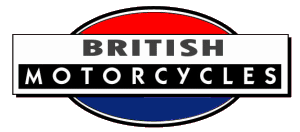

JH were the initials of James Howarth who produced motorcycles from 1914 to 1916 of the J. H. Motor Engineering Works in Castle Mill Street, Mumps, Oldham.
1915 JH offered the two Villiers-powered machines, plus models using 3½ hp and 6hp MAG V-twin engines, the latter with a three-speed or four-speed gearbox.
1916 The engines used for that year were the 269cc Villiers, a 3½ hp JAP and V-twins of 3½ hp, 6hp or 8hp from MAG, or 6hp or 8hp from JAP.
WE illustrate on next page two interesting lightweight machines called the J.H., which are being introduced by Mr. James Howarth (formerly manager of the Bradbury Company), at the J.H. Motor. Engineering Works, Oldham. The general details of the machines are very similar - both are fitted with B. and B. carburetters, Dunlop belts, Dunlop or Palmer tyres of 2in. section on 26in. wheels.
Respecting the engines, No. 1 is fitted with the Villiers 2¾ h.p. power unit, comprising a four-stroke engine, 74½x80 mm. bore and stroke, 349 c.c, and a change speed gear carried in an extension of the crank case, giving ratios of 5¼ and 10¼ to 1, the gear wheels being always in mesh, and provided with a friction clutch of the cone type on both speeds, operated by a Bowden wire from the handle-bar. The gear lever is carried in a convenient position to the right hand side of the tank. With the exception of the driving pulley the whole mechanism is enclosed in an aluminium case, through which there is a complete circulation of oil. The transmission is by silent chain to the two-speed gear and thence by a ¾in. belt. The price of this model is forty-four guineas.
Our second illustration shows the 2½ h.p. two-stroke model, which sells at twenty-eight guineas ; the engine is the well-known Villiers two-stroke, 70 x 70 mm. bore and stroke, 259 c.c, and is provided with a double silencer, rendering it comparatively silent. The lubrication is on the "petroil" system, and the magneto, a U.H., driven by an enclosed chain. The tanks hold about 1¼ gallons of petrol and two pints of oil. It is claimed that this machine can be driven at a walking pace up to 35 or 40 m.p.h.
Mr. Howarth caters for all tastes, and other models are fitted with 6 and 8 h.p. J. A. P. and 6 h.p. M.A.G. engines and three-speed gears. They are listed at seventy and seventy-two guineas, and are well suited for sidecar work.
The Motor Cycle, October 15th, 1914. p437.
WHEN we described the J.H. lightweights in our issue of October 15th we referred to the powerful twin machines of the same make, and we now describe these machines. The 6 h.p. model is turned out with either J. A. P. or M.A.G. engine, the latter being the one illustrated.
The engine has a bore and stroke of 72 mm. x 91 mm. (742 c.c). The inlet valves are overhead, and the enclosed operating gear is lubricated automatically from the crank case. The magneto is carried behind the engine, chain driven, and the B. and B. carburetter is fitted between the cylinders. The three-speed gear box, combined with kick starter and cork insert clutch, operated by the right foot, is placed behind the engine and below the frame, which is raised at this point to accommodate it. The gears are of the sliding dog type, always in mesh, and controlled by a lever on the top tube. The specification includes Druid forks, Dunlop extra heavy or Palmer cord 650 X 65 tyres, voiturette rims, with specially strong spokes, Middlemore and Lamplugh or Lycett saddle, pannier bags, and folding kit of tools, large tank holding two and a quarter gallons of petrol and three pints of oil, and aluminium footboards. The transmission is by 3/8in. chain throughout.
The J. A. P. engined machine is similar in general details but fitted with the 6 h.p. J.A.P. 76 mm. x 85 mm. (770 c.c), which has forced lubrication and an internal exhaust valve lifter. Only one camshaft is used, and the four valves are operated by two cams. Both these machines are very suitable for sidecar work, and are supplied with the necessary lugs brazed to the frame. To those who require still more power, the 8 h.p. machine (J.A.P. engine, 85½ mm. x 85 mm. bore and stroke, 988 c.c.) will appeal.
The Motor Cycle, October 29th, 1914. p493.
THE J.H. racer, of which we give an illustration on this page, is a very smart looking machine. The engine is a 3½ h.p. M.A.G. with overhead inlet valves, the mechanism of which is lubricated from the crank case through the tubes in which the tappets work. As will be seen, the magneto is snugly housed between the rear cylinder and the saddle tube. The silencer is capacious, and has a tube extended to the rear. The rear brake is operated by the left heel, and is applied above the chain stay - a position of great power. Brooks saddles and Druid forks are fitted.
Other model J.H. machines have already been described in our issues of October 15th and 29th, viz., a 2½ h.p. two-stroke, a 2¾ h.p. single-cylinder, 6 h.p. and 8 h.p. twin-cylinder machine fitted with J.A.P. or M.A.G. engines.
The Motor Cycle, November 20th, 1914. p597.
Source: Graces Guide
If you have further information or a query related to this page, please contact us